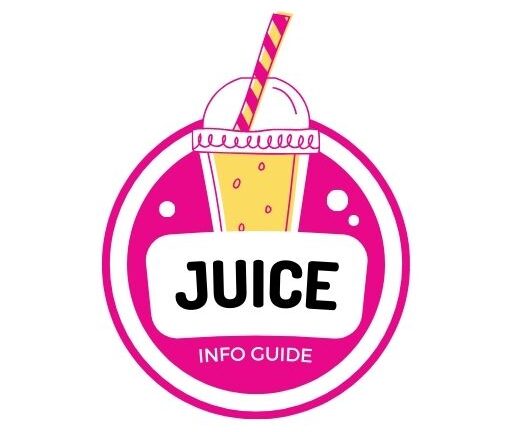When you think of Pepsi, the first thing that likely comes to mind is its iconic cola. But did you know that PepsiCo, the parent company of Pepsi, has a significant presence in the orange juice market? While Pepsi itself doesn’t make orange juice directly, its corporate umbrella includes one of the most recognized orange juice brands in the world: Tropicana. Let’s dive into how PepsiCo became a major player in the orange juice industry and explore what makes their juice offerings unique.
A Look at PepsiCo’s Expansive Beverage Portfolio
PepsiCo isn’t just about carbonated soft drinks. Over the years, the company has diversified its portfolio to include a wide range of beverages and snacks. From sports drinks like Gatorade to health-conscious options like Naked Juice, PepsiCo caters to a variety of consumer preferences. Among these offerings is Tropicana, one of the most popular orange juice brands globally.
In 1998, PepsiCo acquired Tropicana for $3.3 billion, marking a bold move into the fruit juice market. This acquisition allowed PepsiCo to tap into a growing demand for healthier beverage options and establish itself as a leader in the juice category. So while Pepsi doesn’t make orange juice under its flagship brand, its parent company has been producing high-quality orange juice for decades through Tropicana.
What Makes Tropicana Stand Out?
Tropicana is synonymous with fresh, high-quality orange juice. It offers a variety of options, including:
– Not From Concentrate (NFC) Juice: This type of juice is made directly from oranges without being concentrated or reconstituted, preserving its natural flavor.
– From Concentrate Juice: This involves concentrating the juice by removing water and later rehydrating it before packaging.
– Low-Pulp and High-Pulp Options: Catering to different texture preferences.
– Fortified Juices: Some varieties are enriched with calcium or vitamin D for added health benefits.
Tropicana sources its oranges primarily from Florida and uses advanced processing techniques to ensure consistent flavor and quality. The brand also emphasizes sustainability, working to reduce its carbon footprint by improving agricultural practices and exploring eco-friendly packaging solutions.
The Science Behind Orange Juice Production
Producing orange juice is a complex process that involves multiple steps:
- Harvesting and Sorting: Oranges are carefully selected based on quality and ripeness.
- Juice Extraction: Machines extract the liquid while separating seeds and large pulp pieces.
- Pasteurization: The juice is heated briefly to kill bacteria and extend shelf life without compromising flavor.
- Blending: Juices from different batches are blended to achieve a consistent taste profile.
- Packaging: The final product is packaged in cartons or bottles, ready for distribution.
For Tropicana’s NFC juices, minimal processing ensures that the natural taste and nutrients of the oranges are preserved.
Why Orange Juice Matters in PepsiCo’s Strategy
The acquisition of Tropicana wasn’t just about adding another product to PepsiCo’s lineup—it was a strategic move to diversify its offerings and appeal to health-conscious consumers. As public awareness about sugar consumption grows, many people are turning away from sodas in favor of natural beverages like fruit juices.
Orange juice remains an important category because it combines great taste with nutritional benefits. Packed with vitamin C, potassium, and antioxidants, it’s often marketed as a wholesome choice for breakfast or as an immune-boosting drink.
Challenges in the Orange Juice Market
Despite its popularity, the orange juice industry faces several challenges:
– Health Concerns: While orange juice is rich in nutrients, it’s also high in natural sugars. Some health experts recommend consuming whole fruits instead of juices to avoid blood sugar spikes.
– Sustainability Issues: The production process can have a significant environmental impact, particularly due to fertilizer use in orange farming.
– Competition: Brands like Simply Orange (owned by Coca-Cola) compete fiercely with Tropicana for market share.
PepsiCo has addressed some of these challenges by investing in sustainable farming practices and offering lower-sugar alternatives.
Fun Ways to Enjoy Orange Juice at Home
If you’re inspired by Tropicana’s success but want to get creative with your own orange juice recipes at home, here are some ideas:
– Classic Mimosa: Mix equal parts orange juice and champagne for a refreshing brunch cocktail.
– Citrus Smoothie: Blend orange juice with frozen mangoes, bananas, and yogurt for a tropical treat.
– Homemade Popsicles: Pour orange juice into molds and freeze for a healthy snack.
– Orange Glaze: Use fresh orange juice as a base for glazes on cakes or roasted meats.
These recipes showcase how versatile orange juice can be beyond just sipping it straight from the glass.
Final Thoughts on PepsiCo’s Role in Orange Juice
So, does Pepsi make orange juice? Not directly—but through Tropicana, PepsiCo has become a powerhouse in the global orange juice market. By combining innovation with sustainability and quality control, Tropicana continues to set the standard for what consumers expect from their morning glass of OJ.
Whether you’re enjoying store-bought Tropicana or experimenting with homemade recipes, there’s no denying that orange juice holds a special place in our daily routines—and we have companies like PepsiCo to thank for keeping this tradition alive!
